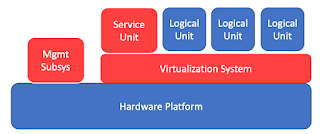Wireless Intrusion Prevention System Market Estimated To Experience A Hike In Growth By 2030 MRFR
Wireless Intrusion Prevention System: An Introduction
Wireless networks have become ubiquitous in today's world, providing a convenient and flexible way for users to connect to the internet and share information. However, wireless networks are also vulnerable to cyber-attacks and intrusions, which can compromise the security of the network and the data that it carries. To address this issue, a class of security systems called Wireless Intrusion Prevention Systems (WIPS) are used to detect and prevent wireless security threats. In this article, we will explore what WIPS are, how they work, and their advantages and limitations.
What are Wireless Intrusion Prevention Systems?
Wireless Intrusion Prevention Systems (WIPS) are a type of wireless security system that monitors and protects wireless networks from unauthorized access, attacks, and other security threats. WIPS are often used in enterprise networks, where the security of the network is critical, and in public Wi-Fi networks, where the security of the users' data is paramount.
✔For Additional Details, Visit Here:
https://www.marketresearchfuture.com/sample_request/5549
How do Wireless Intrusion Prevention Systems Work?
Wireless Intrusion Prevention Systems (WIPS) use a variety of techniques to monitor wireless networks and detect potential security threats. Some of the key techniques include:
Network Scanning: WIPS can scan the wireless network to detect unauthorized access points, rogue devices, and other security threats.
Packet Inspection: WIPS can inspect the packets that are transmitted over the wireless network to detect suspicious or malicious activity.
Threat Modeling: WIPS can model the potential threats to the network and use this information to identify and mitigate potential security threats.
Machine Learning: WIPS can use machine learning algorithms to detect anomalies in the network traffic and identify potential security threats.
Advantages of Wireless Intrusion Prevention Systems
Wireless Intrusion Prevention Systems (WIPS) offer several advantages over other types of security systems, including:
Real-time Detection: WIPS can detect security threats in real-time, allowing the network administrator to take immediate action to mitigate the threat.
Proactive Defense: WIPS can proactively defend against security threats, reducing the risk of data breaches and other security incidents.
Comprehensive Coverage: WIPS can monitor all devices and traffic on the wireless network, providing comprehensive coverage and reducing the risk of undetected security threats.
Centralized Management: WIPS can be centrally managed, making it easier for network administrators to monitor and control the security of the wireless network.


Comments
Post a Comment